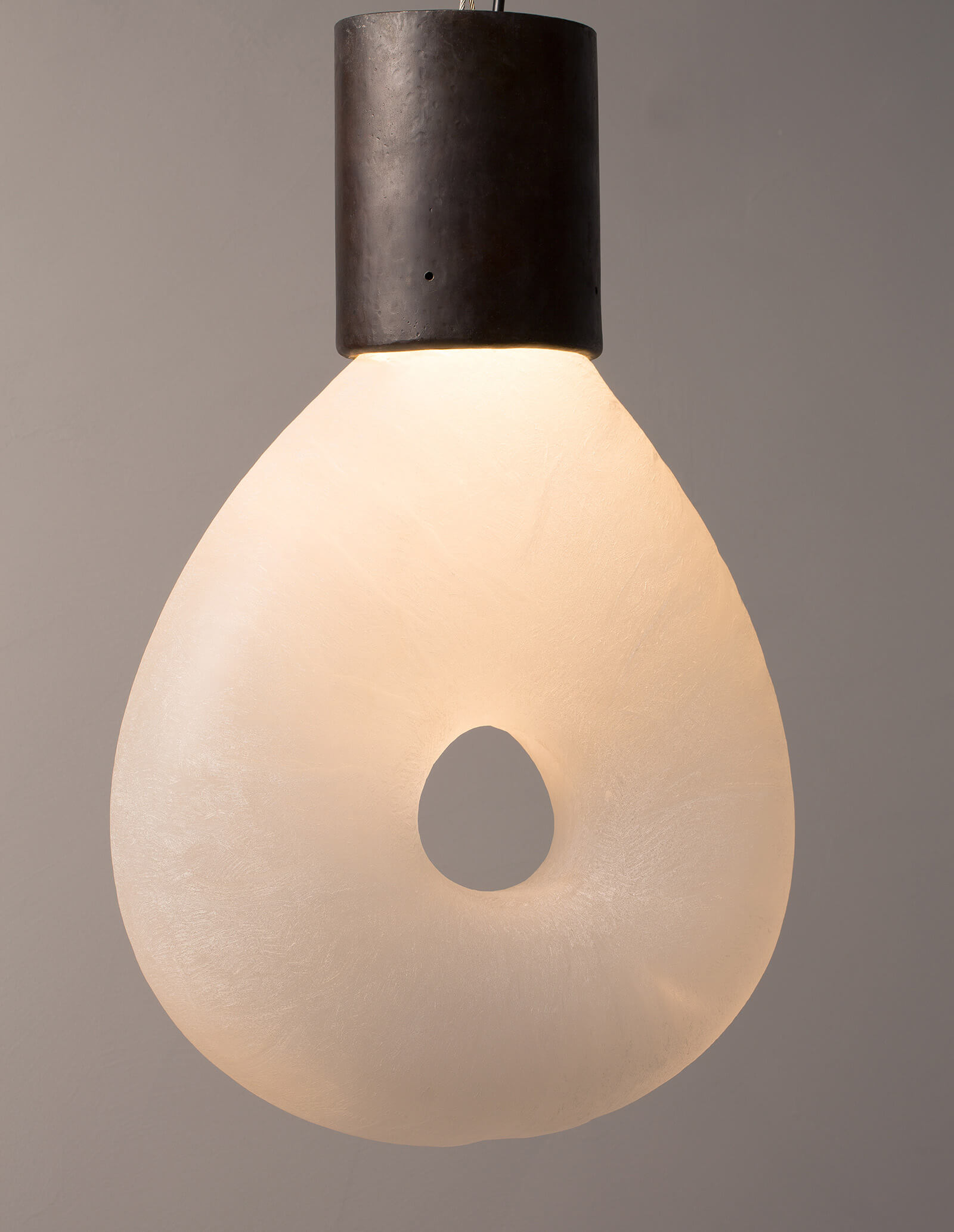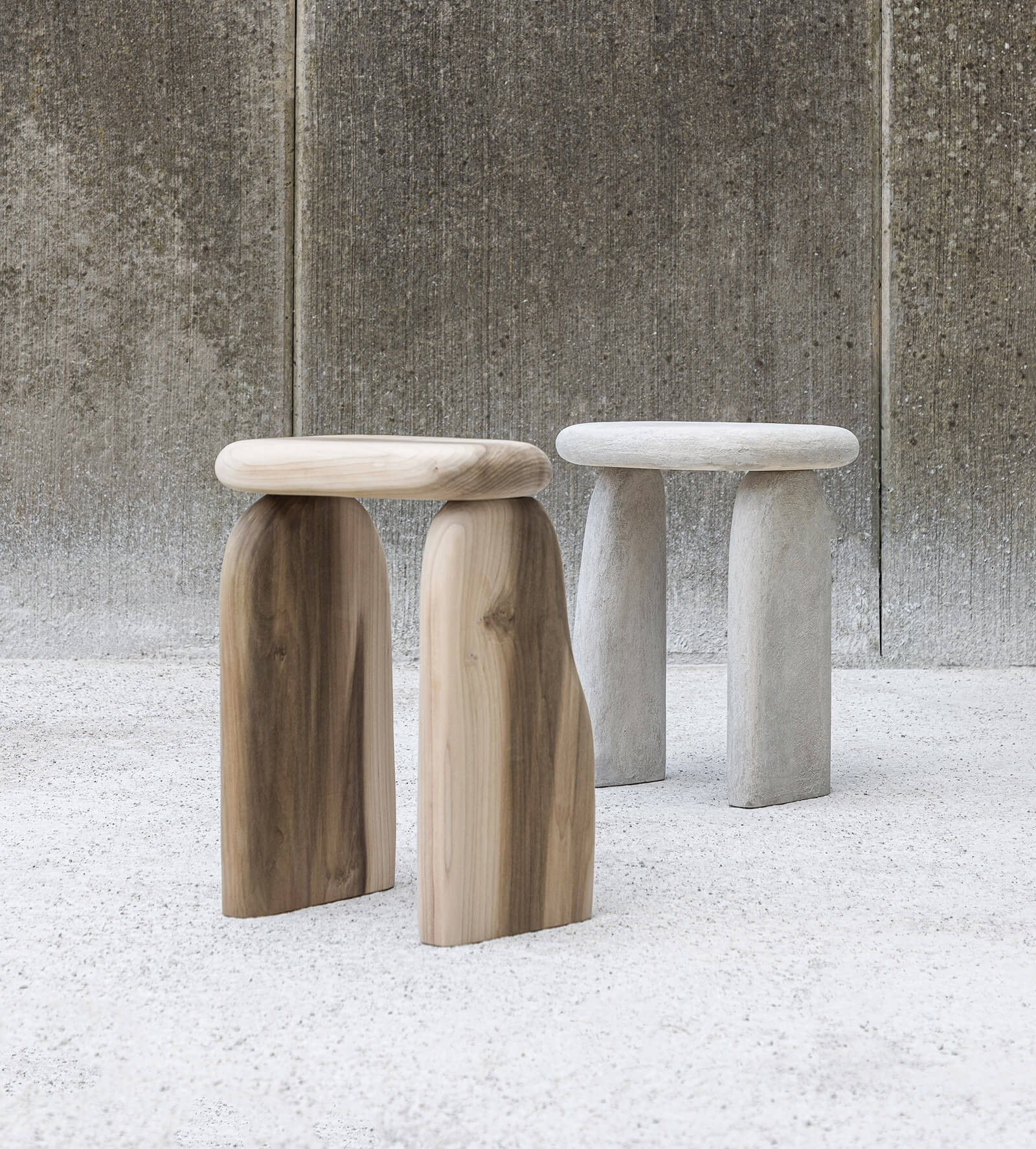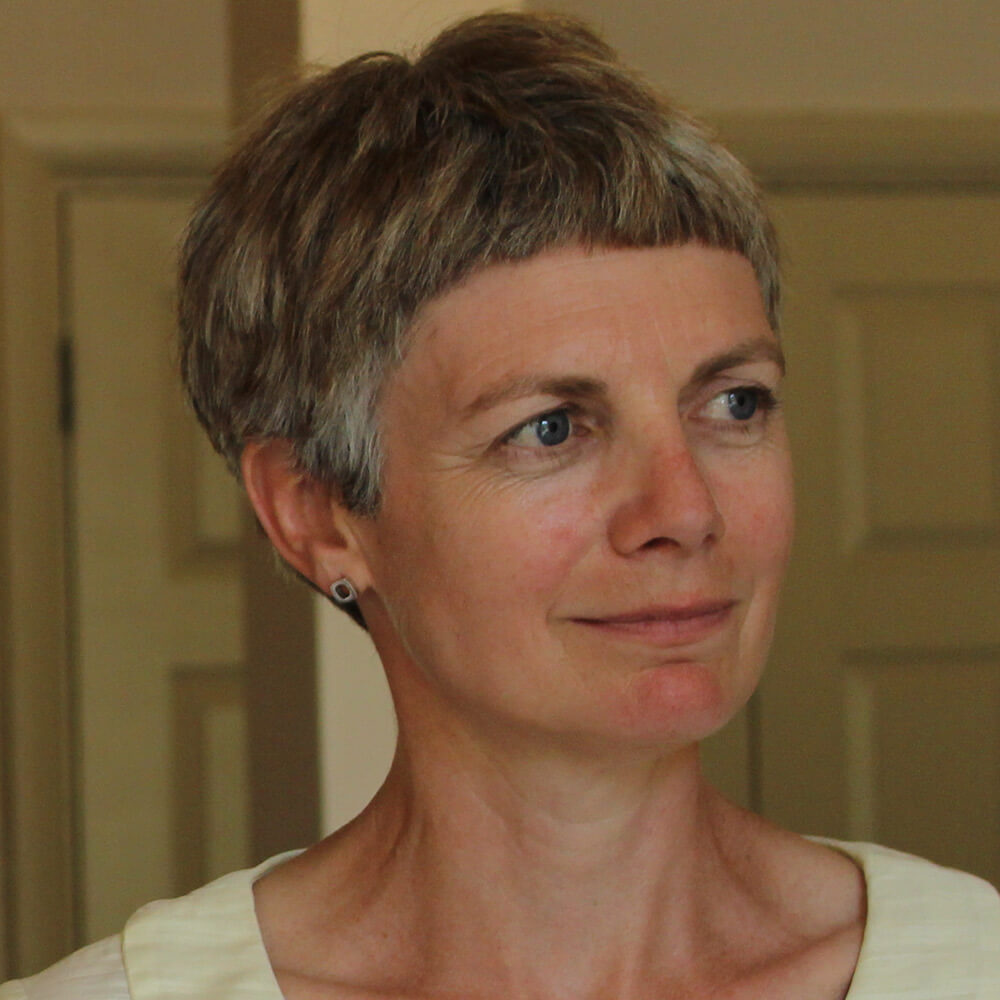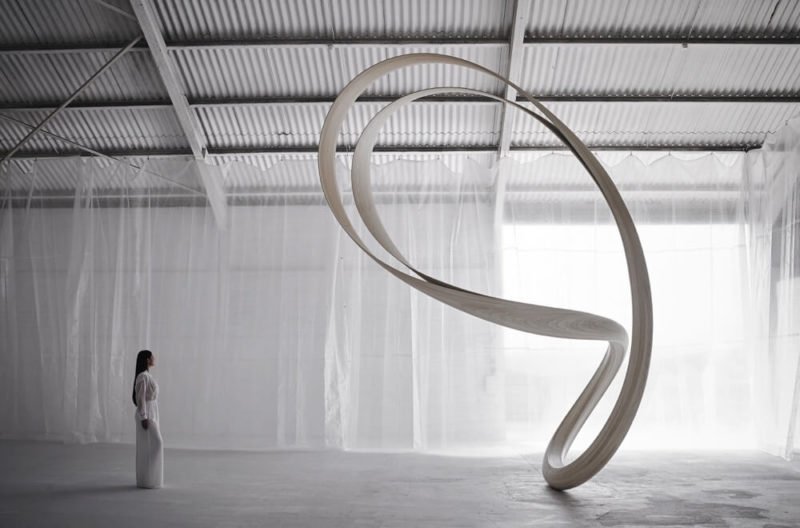Collectible Collaborators
As lockdown eases, and production steps up, Clare Dowdy shines a light on the skilled specialists who bring uncompromising quality to collectible design.

Aldo Bakker, ‘Flat Brown’, 2019 (detail)
COURTESY: Aldo Bakker
TO GET THE exact effect that Aldo Bakker was after for his aluminium bench, he turned to lacquer specialists Sergej and Marina Kirilov. Applying raw urushi onto raw aluminium was a first for the Kirilovs’ Studio Lacquer Décor. “It became a scientific investigation into how to polish it,” Bakker recalls. “Sergej set his alarm for the middle of the night to apply another very thin layer through a cloth, to avoid any surprises in the process and to reach the thickness and depth of colour I had in mind.”
The result was Bakker’s minimalist bench Flat Brown, created for the Carpenters Workshop Gallery. As well as Studio Lacquer Décor, the realisation of the Dutch designer’s concept relied on specialist metal workers DiMa, who fashioned the aluminium.

Aldo Bakker, ‘Flat Brown’, 2019
COURTESY: Aldo Bakker
Such collaborations with highly-skilled artisans are typical in the field of collectible design. Humberto and Fernando Campana, Linde Freya Tangelder, Pierre Yovanovitch, Tinna Gunnarsdóttir and Josefina Muñoz also rely on such relationships.

Craftsman at work in Josefina Muñoz’s workshop
COURTESY: Josefina Muñoz
Why go to all this trouble? Modern methods of mass production would speed up – and offer cost efficiencies on – many processes. But in the rarified world of limited editions, that would not cut the mustard. “The uncompromising calibre of artisans’ work is nearly impossible to find with mass-produced design pieces,” believes Yovanovitch.

Pierre Yovanovitch, ‘Otto’ desk, 2017
COURTESY: Pierre Yovanovitch
Designers, gallerists and collectors see a number of advantages in working so closely with specialised craftspeople, from adding value to objects and pushing what is creatively possible, to resuscitating dying skills. The result is the marrying of often under-funded trades with the high price tags of the gallery world.
Some traditional crafts are at risk of extinction. “There is a crisis for artisanship because most artisans are under-capitalised, and so they are not open to the new world, or to new techniques and equipment,” says Loïc Le Gaillard, joint owner of Carpenters Workshop Gallery. “They just do not know how to survive in the contemporary world.”

Upholstery workshop at Roissy, Paris
COURTESY: Carpenters Workshop Gallery
To help their survival, Carpenters Workshop Gallery has a 90,000 sq ft facility in the French town of Roissy, outside Paris. There, some 45 artisans fashion wax and plaster moulds, forge metal, and transform parchment into desks and cabinets. “Our vision was to accommodate them all under one roof and to create an ecosystem, with a buzz and a sense of purpose,” Le Gaillard explains, “We wanted to give them the right equipment and a reason to carry on.”

Metal workshop at Roissy, Paris
COURTESY: Carpenters Workshop Gallery
The gallery has since rescued a bronze and aluminium foundry which had gone bust. “A lot of the metal workers there thought of becoming Uber cab drivers,” he says. Having its own foundry allows Carpenters Workshop Gallery to “come up with better bronzes, better finishes and push excellency up another notch.” The first piece to go into production is by Ingrid Donat.
Similarly, in Brazil, the Campanas have a studio of 20 artisans and interns. “I am proud to give jobs to people, through making these pieces of collectible design,” says Humberto.

Fernando and Humberto Campana with their team of artisans and staff, São Paulo
COURTESY: Studio Campana / PHOTOGRAPH: Jason Schmidt
While some in the design world – like Carpenters Workshop Gallery and the Campana brothers – set up their own workshops and employ artisans directly, others have long-term relationships with favoured specialists. Many in the sector talk of an altruistic desire to save certain skills, because they are part of their own cultural heritage. And without those skills certain very high-level crafts will just die out.

Campana Brothers leather workshop with teenagers, part of the Projeto Arrastão which teaches new skills and supports families living in poverty
COURTESY: Studio Campana

Fernando and Humberto Campana, ‘Jeans Collection’, developed with the Projeto Arrastão
COURTESY: Studio Campana
Iceland-born Tinna Gunnarsdóttir has her studio in Reykjavik 1993. There, she is “keeping the heritage alive. I have been working with various local artisans in Iceland for more than 20 years. Some of them I work with again and again, both because of their craftsmanship and the material they work with.” Her Geognome is handmade from the island’s volcanic lava by local stonemason Thor Sigmundsson.

Thor Sigmundsson holding ‘Geognome’
COURTESY: Tinna Gunnarsdóttir
Meanwhile, Paris-based Pierre Yovanovitch has longstanding relationships with skilled craftsmen around Europe, including glassblowers, woodworkers and upholstery specialists. “The quality and detail of my pieces would not be achievable without the specialised skill set of these craftspeople, so without them the vision of my design would be impossible to execute at a high level.” He cites the ‘Stanley’ sofa, which involved collaborating with a woodworker to create the larch frame, and Ateliers Jouffre for the custom upholstery.

Pierre Yovanovitch, ‘Marsha and James’ floor lamps, 2017
COURTESY: Pierre Yovanovitch
“The quality and detail of my pieces would not be achievable without the specialised skill set of craftspeople”

Pierre Yovanovitch, ‘Zou!’ pendant, 2017
COURTESY: Pierre Yovanovitch
“My relationship with these artisans is an integral component to my business”
Highly-skilled craftspeople offer a collector something handmade. For Tangelder, founder of Brussels- and Antwerp-based design studio Destroyers/Builders and creator of the Bo Bardi tables, “it is about the quality and the uniqueness. I want to combine the expertise of the craftsmen with the natural touch of human hand.”

Destroyers/Builders, ‘Windows of Bo Bardi’ side tables, 2019
COURTESY: Destroyers/Builders Studio
Bakker backs this up: “You’re immediately convinced that if something is made by hand it’s been created by someone who has a deep and special interest in a technique.” And this quality is a valuable commodity. “Artisans bring a human aspect to what they are doing, artworks are made through the intelligence of the hands,” says Le Gaillard, “which is key to explaining why they command such high prices.”

Upholstery workshop at Roissy, Paris
COURTESY: Carpenters Workshop Gallery
Skilled craftspeople can even help artists and designers push their concepts further. Geneva-based Argentinian designer Muñoz works with Pietre Trovanti, the stone-cutters who are based in Verbano-Cusio-Ossola in northern Italy. The artisans use off-cuts for her Game of Stone collection. “They are open to experimentation, which is key to the success of this project,” she says.

Josefina Muñoz, ‘Game of Stone’ collection, 2018
COURTESY: Josefina Muñoz / PHOTOGRAPH: Baptiste Coulon
Carpenters Workshop Gallery’s Roissy facility acts as a laboratory where “the artist and gallery can stretch the boundaries of elite craftsmanship,” says Le Gaillard, because “if you want to stretch the boundaries with materials and techniques, you experiment.”

Metal workshop at Roissy, Paris
COURTESY: Carpenters Workshop Gallery
It can help the dialogue if the designers themselves have an understanding of the craft process. Designers with backgrounds in artisanal crafts appreciate the effort and skill that goes into them. Gunnarsdóttir studied metal design in the UK when she was young, “so I have been through a lot of these processes myself and know how much time and experience you must gain to be a good craftsman”. Likewise, Bakker has a background in jewellery-making and silver-smithing.
And the very relationship that designers forge informs and inspires their creative thinking. Most of Gunnarsdóttir’s design work is self-initiated, which means she creates her own design brief. “Sometimes the material is the starting point, sometimes it is more about a dialogue with the local culture or heritage, or a reaction to the international field of design and production.” In all three cases, the input of the artisan is important.

Tinna Gunnarsdóttir, ‘Geognome’, 2002
COURTESY: Tinna Gunnarsdóttir
Bakker reiterates this: “I see and make use of craft as a means to give presence to my artistic beliefs, a kind of transition (the thinking transformed into matter), craft as part of, or in service of, a creative statement.” Despite the crucial role played by the artisan – “my relationship with these craftspeople is an integral component to my business,” says Yovanovitch – their role is often unsung. “I think often the people who are able to make these objects are not rewarded enough,” Bakker laments, “most of the attention goes to the artist.” Artisans he works with include Rutger Graas in wood, Frans Ottink in porcelain; Andre van Loon for fine metal works; stone specialist Testi; and Martijn van Zon for tin.
Designers may be quick to acknowledge their artisans’ contributions, but their survival depends on the handing down of these skills. In Roissy, Carpenters Workshop Gallery pairs an experienced artisan with an apprentice in order to transmit know-how and skills across the generations, “so not only do we have a tool which allows us to make our pieces – but it is sustainable”, says Le Gaillard. In turn, collectors too have a role – as investors in the future of craft skills.
Tinna Gunnarsdóttir discussing her collaboration with Icelandic artisans
COURTESY: Adorno Design / Director: Mathias Skaarup
Aldo Bakker – a Dutch designer.
Carpenters Workshop Gallery – produces and exhibits functional art by international artists or designers, both rising and established, going outside their traditional territories of expression.
Humberto and Fernando Campana – Brazilian designers.
Pierre Yovanovitch – a French interior designer and furniture maker.
Linde Freya Tangelder – founder of Destroyers/Builders, a Brussels & Antwerp based design studio.
Josefina Muñoz – a creative designer based in Geneva, Switzerland, working in product design and crafted short-series objects.
Tinna Gunnesdottir – a designer based in Iceland and Professor of the Department of Design and Architecture at Iceland University of the Arts.







